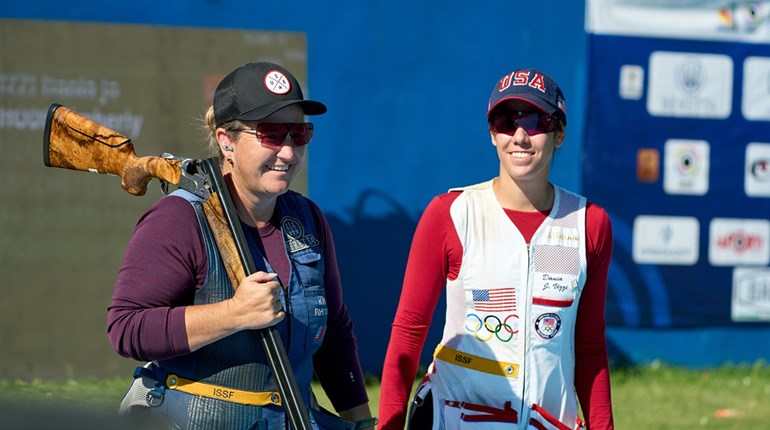
Vintage Military Rifle competition isn’t always about winning—among afficionados, it is often just about the rifles, and walking the firing line to see what others are shooting is one of the attractions of the VMR game. An eligible rifle that would be competitive, especially at 100 yards on NRA reduced targets, is the Argentine Model 1891 carbine. But perhaps not this one.

Argentina’s Model 1891 is a derivative of its precursor, the landmark Mauser Model 1889, which significantly increased a soldier’s firepower with the introduction of the disposable stripper clip or “charger.” (The stripper clip received an American patent in 1878, but Mauser made it a commercial success with the Model 1889.) Designing the receiver for stripper clip loading required moving the bolt locking lugs to the front of the bolt, a configuration that so increases the bolt-action rifle’s locking strength that it remains with us today. Belgium was the first to adopt the Model 1889 in 7.65 mm Mauser; a few modifications morphed it into the Model 1890, which Turkey bought in large numbers.
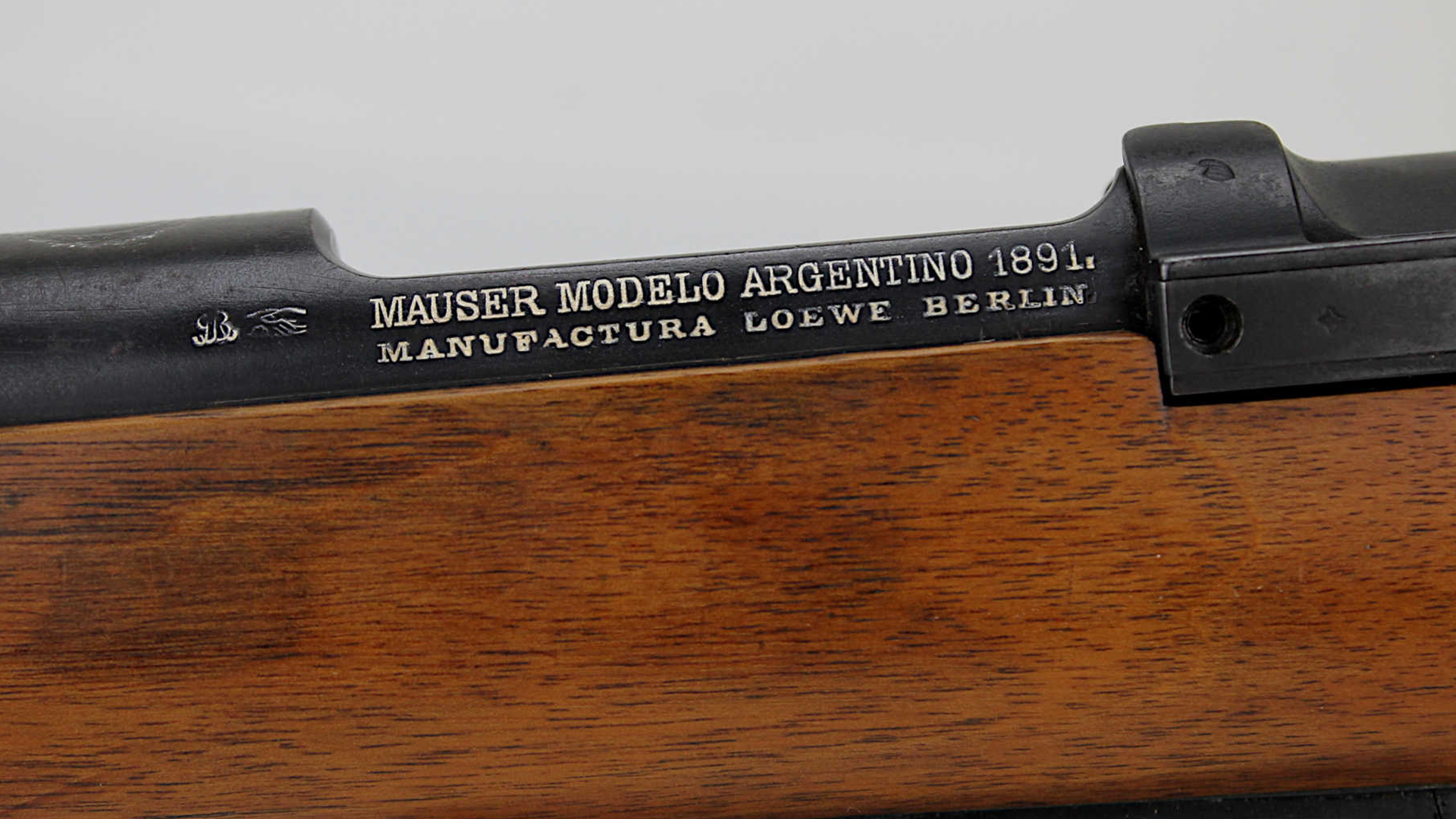
South American countries wanted Mausers, too. By 1891, Mauser had made several more minor improvements to the Turkish Model 1890, and Argentina, Bolivia, Colombia, Ecuador and Peru bought the new Model 1891s chambered in 7.65 mm Mauser to equip their armed forces. Argentina contracted for 180,000 rifles and 30,000 carbines, which were built by Berlin’s Ludwig, Loewe & Company (in 1896, the company became DWM, Deutsche Waffen und Munitionsfabriken—German Weapons and Ammunition Factories). Argentina had two versions of the carbine, the “cavalry carbine” and the “engineer carbine,” the latter differing in having provision to mount a bayonet. Both carbines weighed about two pounds less than the 8.8-pound full-length rifle, and both carbines were stocked to the muzzle. Guards on the steel nose cap protected the front sight.
Excellent Carbine
Here is an example of the cavalry carbine. Barrel length is a very handy 18 inches, reducing the full-size rifle’s 48½-inch overall length to 37 inches. Overall condition is NRA Excellent. Markings include those identifying the maker, the Argentine crest and several proof or acceptance stamps, two of which appear to be two hands clasped in greeting. Serial numbers on barrel and receiver match, while that on the magazine is different. The bolt has no serial number.
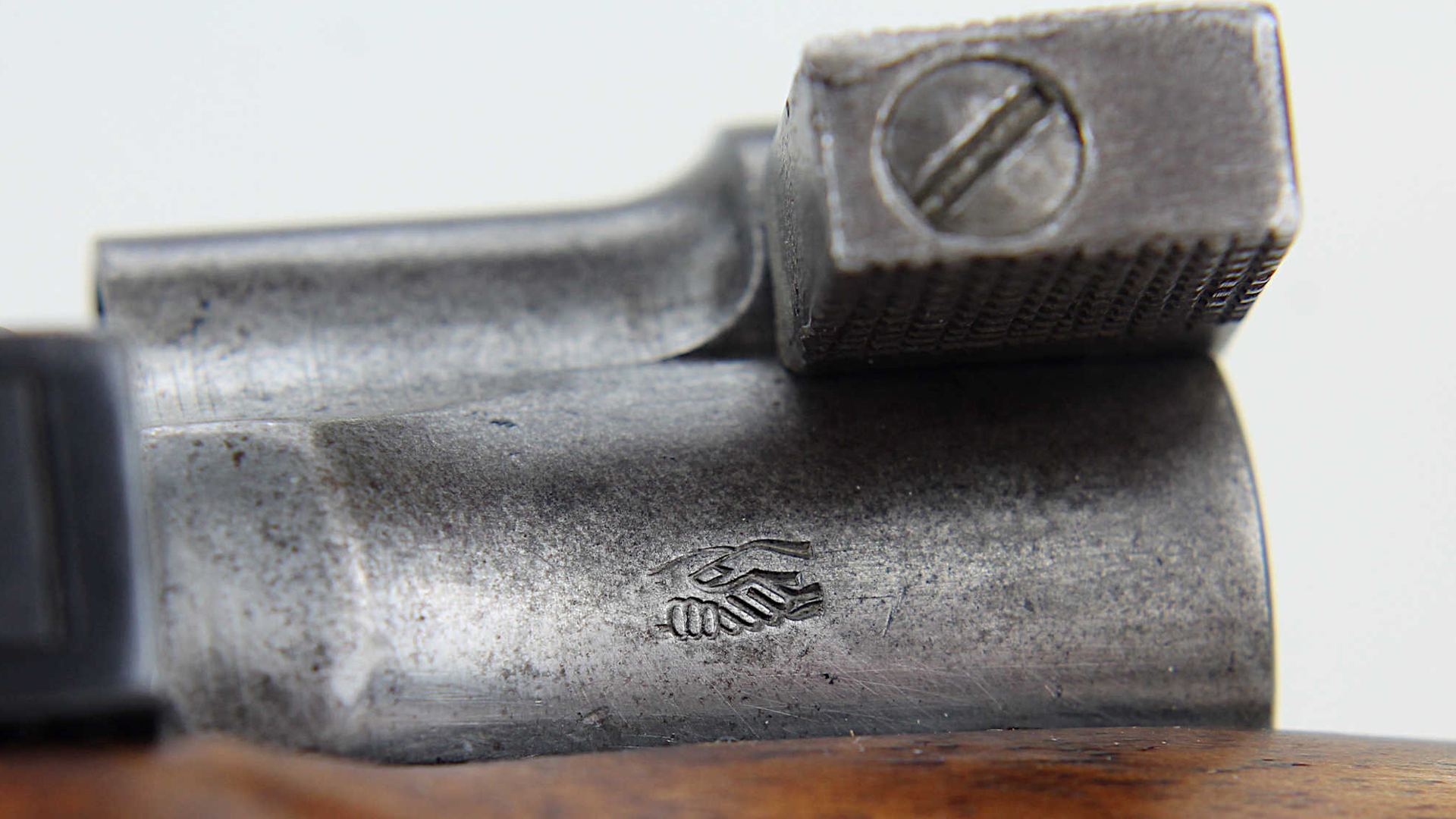
Mauser’s 1891 action design is somewhat less complicated than later models. Bolt and handle are a single piece. The bolt stop also acts as the ejector; there’s a slot cut in the left bolt lug to accommodate it. The bolt stop’s thumb piece also serves as the left guide for the stripper clips.
The bolt face is recessed, the underside relieved to allow cartridge rims to pass upward from the magazine, but it does not feature controlled-round feeding as such. The short extractor anticipates that of the AR-15 and snaps over the case rim at the four o’clock position when the bolt is closed. A tiny stud mounted inside the receiver ring prevents the extractor from moving sideways when locking the bolt. The bolt cocks on closing and the two-position safety locks the bolt when engaged.

Though detachable, the Model 1891’s magazine was not intended to be routinely removed, say, like that on the AR-15. Unlike today’s stamped metal or plastic AR magazines, the Model 1891’s magazine is beefy milled steel. Generals or bean counters apparently fearful of a soldier losing his (expensive) magazine, it is retained by redundant locking devices. To remove it, a slot-headed rotary lock in front of the magazine must be turned out of its engagement with a notch in the magazine front. Then, using a bullet tip to depress a button inside the trigger guard releases the magazine to be withdrawn.
Uncommonly short for its day and differing from that on the rifle, the carbine’s rear sight is nonetheless flip-up adjustable, with range marks from 500 to 1,400 meters. Front sight is the ordinary inverted V or “barleycorn” type.
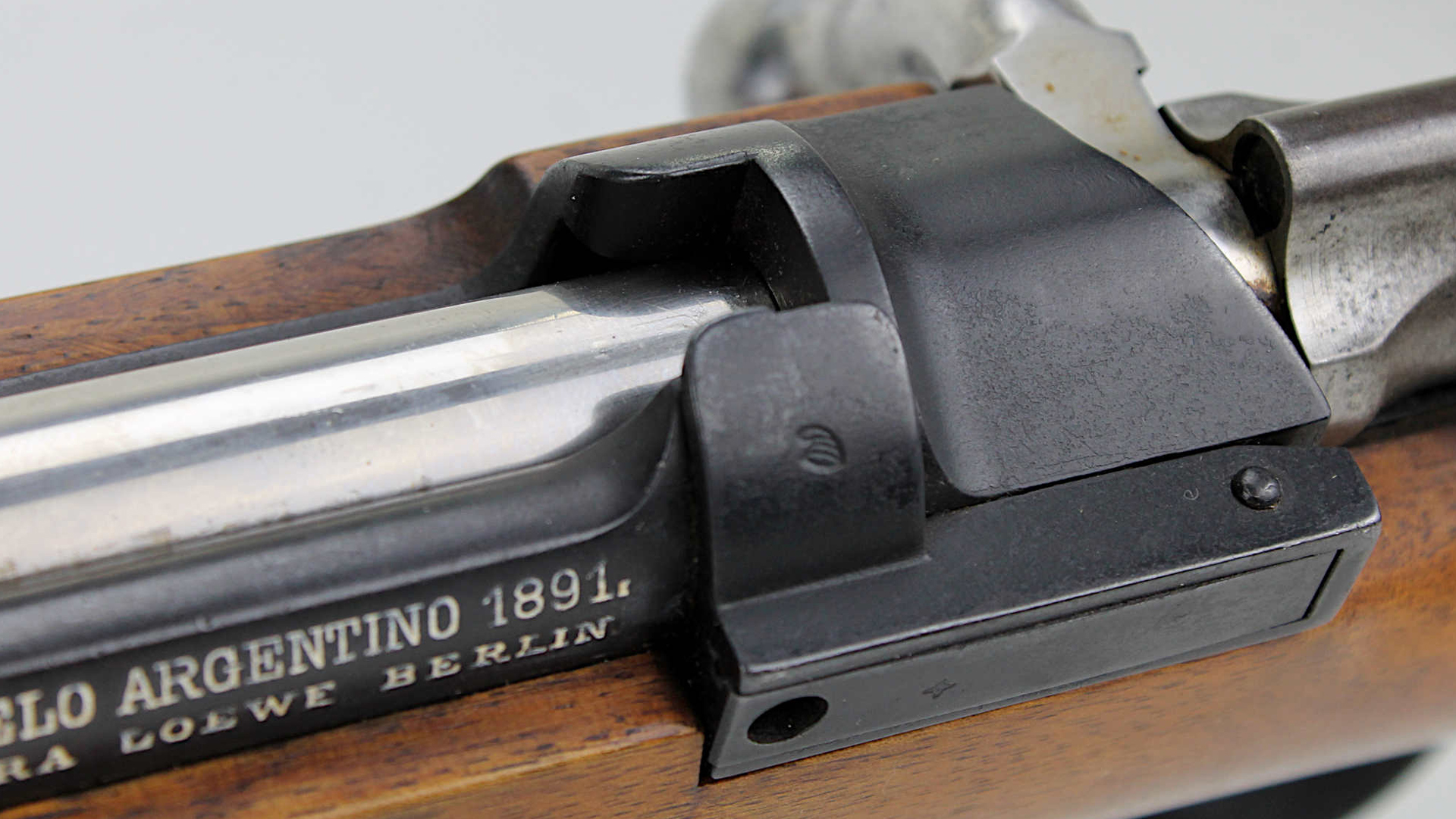
7.65 by any other name …
Comparable in performance to the .308 Winchester/7.62x51 mm NATO cartridge, the 7.65 mm Mauser cartridge design is essentially a shortened and necked-down 8x57 mm Mauser case, with the neck also considerably shortened, as well. Other designations for the cartridge are 7.65x53 mm, 7.65x54 mm, 7.65x53 mm Mauser, 7.65x53 mm Argentine, 7.65x53 mm Argentine Rimless, 7.65 mm Argentine, 7.65 mm Belgian and 7.65x53 mm Belgian Mauser.
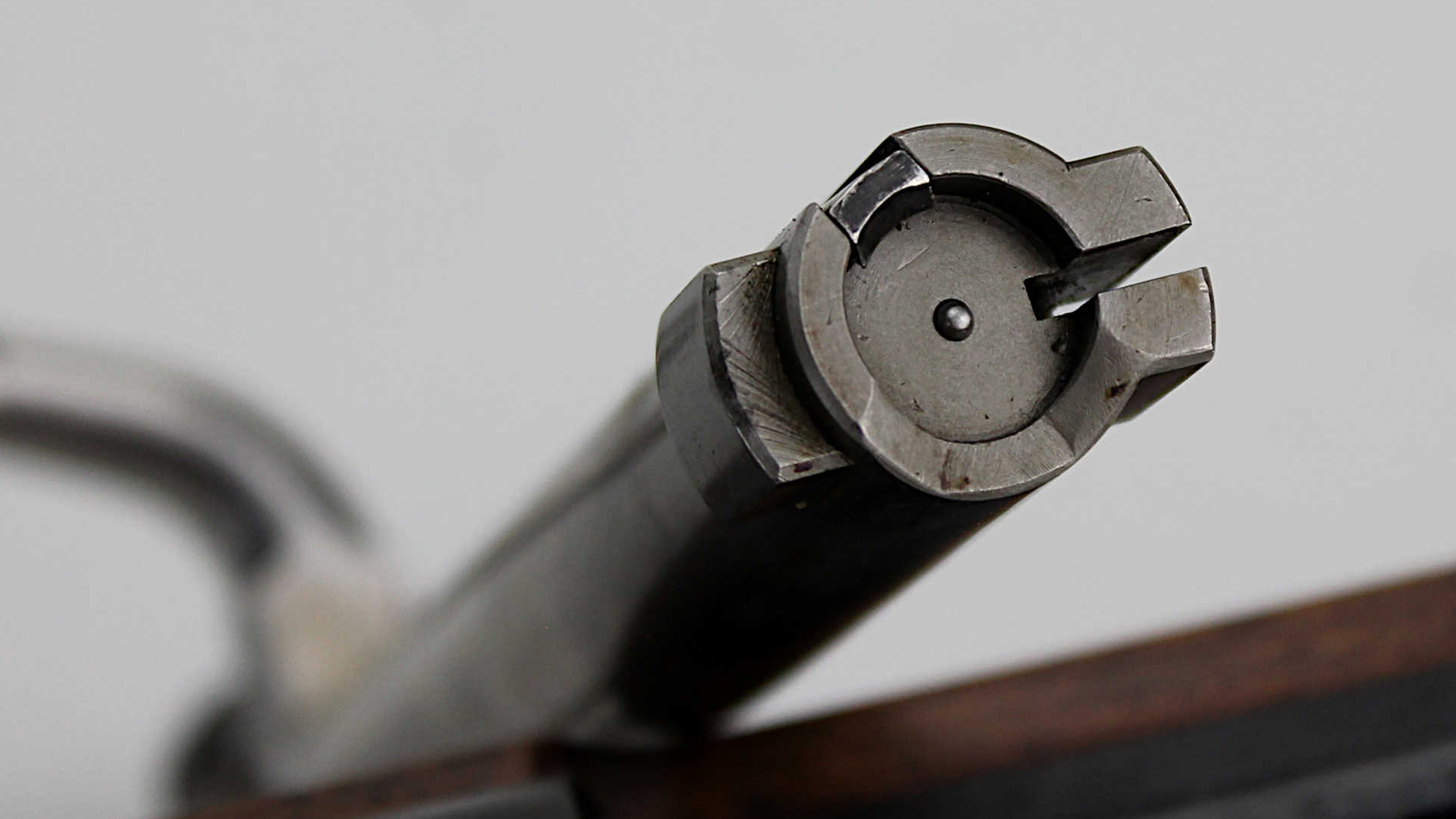
Original military loading for Argentina was a .313-inch diameter, 216-grain cupro-nickel jacketed round-nose bullet generating just less than 40,000 p.s.i. to drive the bullet at 2,034 f.p.s. The loading, of course, changed with the times, Argentina upgrading to a 154-grain and then 174-grain boat tail bullet at higher velocity. No U.S. company manufactures the cartridge today, but it is available as an import made by Norma and Prvi Partizan.
For the handloader, an online check showed reloading dies by Hornady, Lee Precision, RCBS and Redding are readily available at numerous, well-known reloading supply houses—rather surprising, given the cartridge is long obsolete, but it is perhaps an indicator of its continued popularity and the numbers of so-chambered Mauser rifles made for so many countries that remain in shooting condition.
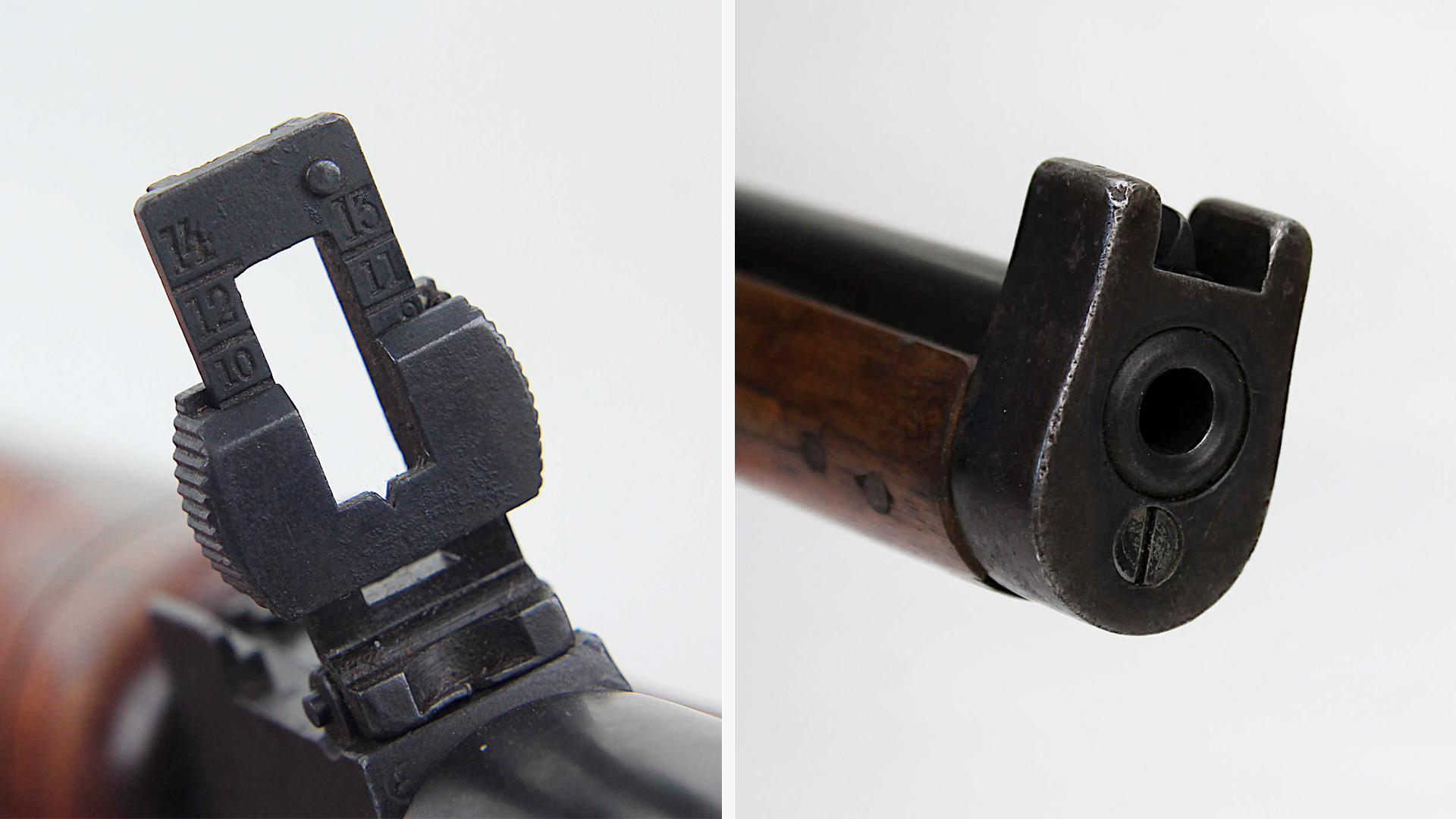
Factory loads feature bullets of .311- and .312-inch diameter and 174 or 180 grains; handloaders have choices in lighter bullets, if desired. Because 7.65 mm Mauser bores measured a nominal .301 inch, ordinary .308-inch bullets may shoot satisfactorily at short range in many rifles, but for VMR competition the larger diameter bullets are probably a better choice as the depth of the four grooves in original barrels is .005 inch. Twist rate is 1:10-inch (actually given as 1:9.84-inch). Bullets intended for the .303 British cartridge are suitable for the 7.65 mm Mauser; makers include Berry’s, Hornady and Sierra.
Cases may be formed from .30-’06 Sprg. brass by running them into a 7.65 mm Mauser resizing die with plenty of case lube and the decapping rod removed. Load data appears in many reloading manuals, especially older ones, and is available from Hodgdon. Because CMP Vintage Military Rifle competition is conducted at short 200- and 100-yard distances, mild loads and lighter bullets are adequate for punching paper and will reduce recoil.

Who made the stock mod?
Argentine police were still equipped with the Model 1891 carbine into the 1960s, and the guns routinely appear in online auction houses today with asking prices ranging from about $300 up to $900, depending on condition and the seller’s optimism. Possibly an Argentine arsenal rebuild before being sold as surplus, it is obvious that the stock on this one has been modified from a full-length rifle to fit the carbine: the inletting for the barrel band spring and cleaning rod, which were not utilized on the carbine, are expertly filled with wood strips. Also, the rear sling swivel on the carbine should be squarish and mounted about three inches behind the trigger guard; here, screw holes for a full-length rifle sling swivel mount near the butt have been filled in with wood plugs. Nor is there a front sling swivel.
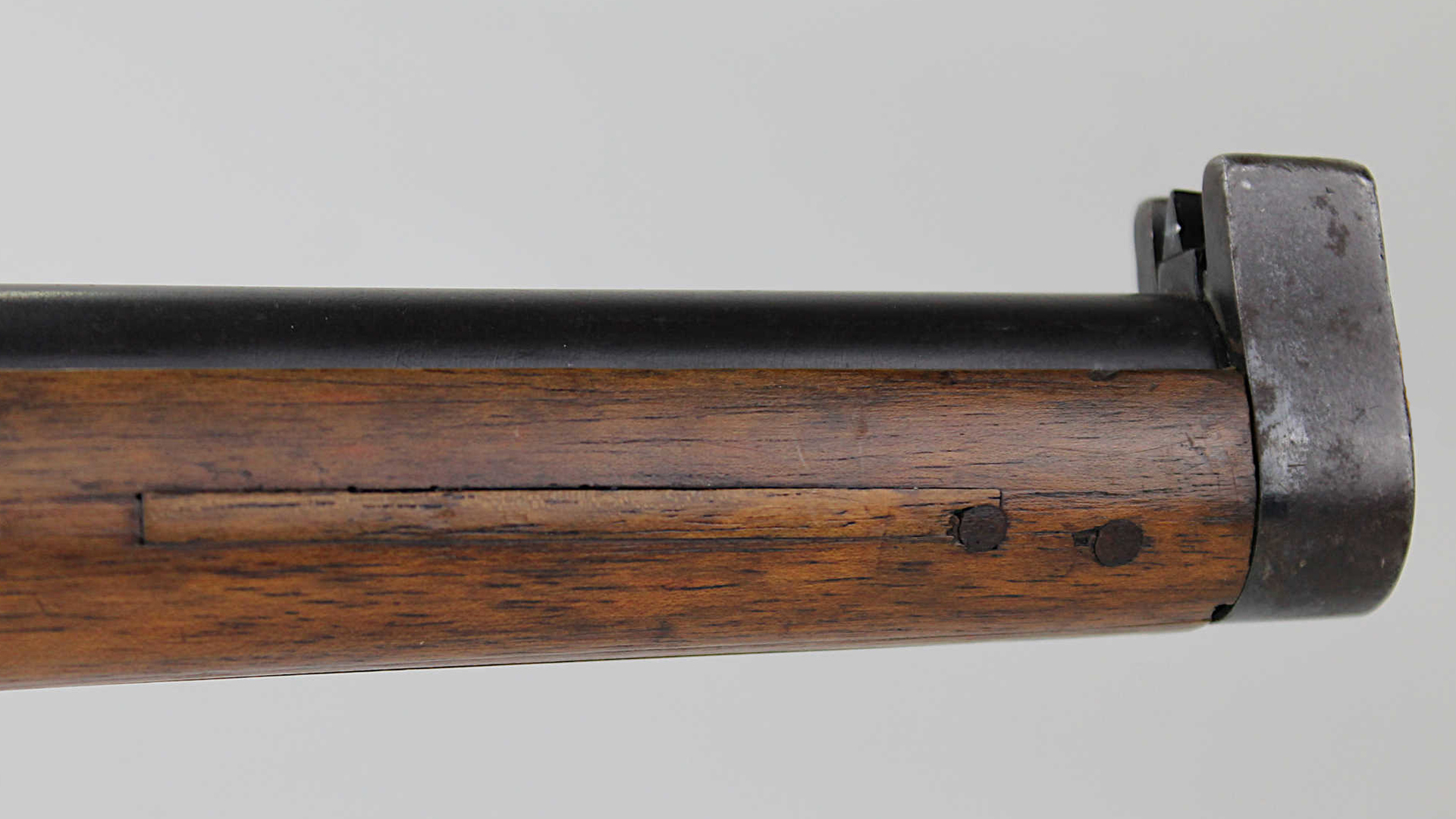
Research has not turned up any information on whether the modifications might have been done by Ludwig, Loewe & Company to use full-length rifle stocks to fill carbine orders, or at an Argentine armory as a repair or by a skilled cottage gunsmith, so the carbine’s value—especially its historical value—as an “original” is questionable. That the carbine no longer has any provision for mounting a sling makes it unlikely the modifications were for military service. Alas, it is also a major handicap for sitting, kneeling and prone shooting in VMR competition.
From an accuracy perspective, full-length rifles have a sight radius advantage over carbines, but have you ever witnessed that lone factor inarguably deciding a match? When scores are posted, a well-made rifle or carbine in the hands of a skilled competitor shooting excellent ammunition has far more influence than barrel length on placing high on the list, especially when competing at 100 yards on NRA reduced targets. Carbines like this Model 1891 Argentine that were in general issue are eligible for Vintage Military Rifle competition. Perhaps you’ll see one at your next match. With a sling.













